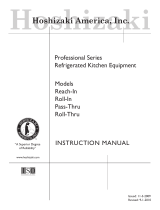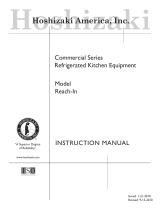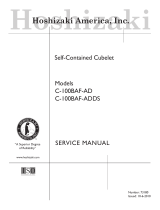
6
WARNING, continued
• Do not use an extension cord.
• Do not use an appliance with a damaged power cord. The power cord should not
be altered, jerked, bundled, weighed down, pinched, or tangled. Such actions
could result in electric shock or re. To unplug the appliance, be sure to pull the
plug, not the cord, and do not jerk the cord.
• On corded models, the GREEN ground wire in the factory-installed power cord
is connected to the appliance. If it becomes necessary to remove or replace the
power cord, be sure to connect the power cord's ground wire.
• Do not splash, pour, or spray water directly onto or into the appliance. This might
cause short circuit, electric shock, corrosion, or failure.
• Do not make any alterations to the appliance. Alterations could result in electric
shock, injury, re, or damage to the appliance.
• This appliance is not intended for use by persons (including children) with reduced
physical, sensory, or mental capabilities, or lack of experience and knowledge,
unless they have been given supervision or instruction concerning use of the
appliance by a person responsible for their safety.
• Children should be properly supervised around this appliance.
• Do not climb, stand, or hang on the appliance or door or allow children or animals
to do so. Do not climb into the appliance or allow children or animals to do so.
Death or serious injury could occur or the appliance could be damaged.
• Be careful not to pinch ngers when opening and closing the doors. Be careful
when opening and closing the doors when children are in the area.
• Open and close the doors with care. Doors opened too quickly or forcefully may
cause injury or damage to the appliance or surrounding equipment.
• Do not use combustible spray or place volatile or ammable substances in or near
the appliance. They might catch re.
• Keep the area around the appliance clean. Dirt, dust, or insects in the appliance
could cause harm to individuals or damage to the equipment.
• Do not throw anything onto the shelves or load any single shelf with more than
120lb. (54.5 kg) of product. They might fall off and cause injury.
• Do not place anything on top of the appliance. Foreign objects or moisture could
enter the appliance and result in electric shock or re.
• This appliance is designed only for temporary storage of food. Employ sanitary
methods. Use for any other purposes (for example, storage of chemicals or
medical supplies such as vaccine and serum) could cause deterioration of stored
items.
• Do not block the cabinet air inlet or outlet, otherwise cooling performance may be
reduced.
• Do not tightly pack the cabinet. Allow some space between items to ensure good
air ow. Also allow space between items and interior surfaces.
























